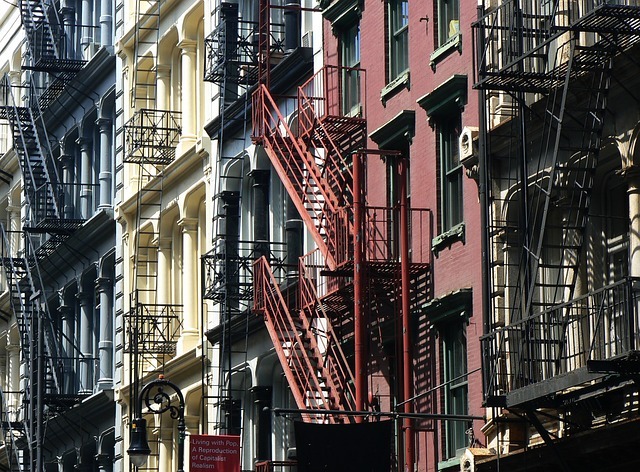Soho

What for many is just another of the countless old buildings that grace the streets of Manhattan, for others is a cultural legacy in the form of an architectural monument that cannot be calculated.
One of the areas that went from being a meeting place for bohemian artists and street musicians to one of the most expensive and sought-after neighborhoods in the world overnight is the area between South Houston Avenue (known as Soho) and the western part of Greenwich Village. Its name comes from the abbreviation of South of Houston, which New Yorkers pronounce House-tin, because of its northern border. In the lower part of the city, SoHo is located between Lafayette Street, Canal Street and Varick Street, which form its eastern, southern and western boundaries, respectively.
Although the area was originally a purely residential neighborhood in the 19th century, over the years people moved north to make way for new factories, primarily in the metalworking industry.
Initially a lower middle class neighborhood, the area became increasingly expensive over time due to its artistic innovation, so many artists moved their stores and studios to other neighborhoods, leaving only the current exclusive galleries, stores, and restaurants and, as a new development, the Yuppies.
Architecture
Among the most relevant architectural works in Soho is No. 10 Green Street, built in 1869 with a mix of cast iron facade and adorned with sober Tuscan columns, whose splendor can be appreciated although it is partially hidden by a fire escape.
Continuing on Green Street, we can see the building at number 28, known as the “Queen of Greene Street” for its particular style of ornate facade with an air of the French Second Empire. This building is an example of the form of buildings built against time and budget 150 years ago using foundry technology.
200 meters further along the same street are two small iron buildings by the famous architect John B. Snook (the same architect who designed such works as the St. Nicholas Hotel and the first Grand Central Depot). According to old account books, these buildings cost $6,000 each and were erected in just 4 months in the summer of 1869.
469 Broome Street was built as a warehouse for fur trader William H. Gunther, but after various other uses, such as a fabric showroom and storage room, it now houses an art gallery and artists’ studios, as well as many other open spaces on the same street.
These functional changes clearly illustrate the gradual transformation of Soho from a residential neighborhood for a brief period (1820-1830), to a predominantly textile district (1850-1910), to a light industrial and manufacturing area (1910-1950), to its current use as a neighborhood filled with galleries, artists’ studios, and fashionable boutiques.
Video
https://goo.gl/maps/ToRf54RgFeHKwC2f6
